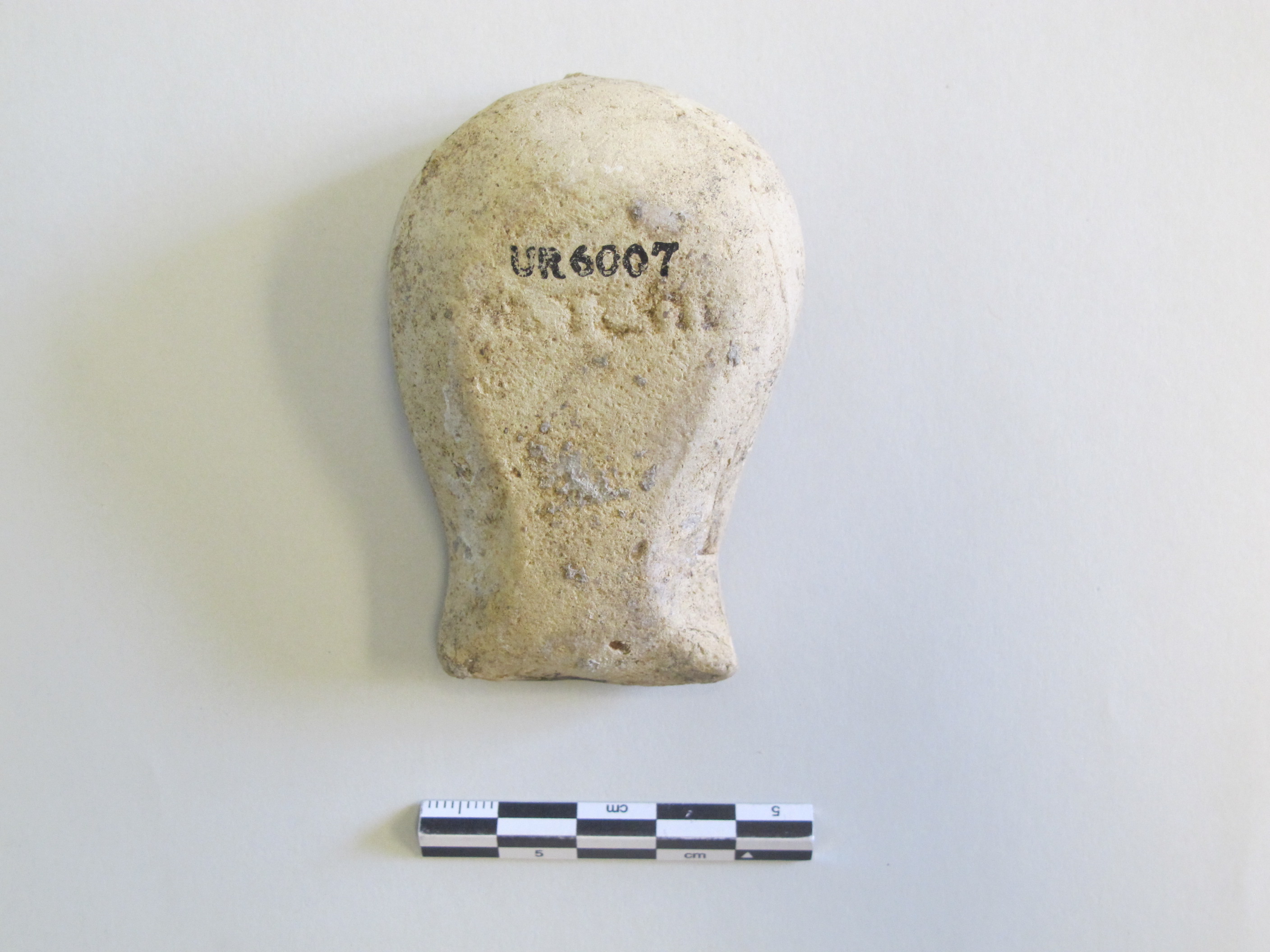
UR-6007
Roman ‘Vogelkopf’-style lamp
1st Century B.C.E. – 2nd Century A.D.
Clay
Maximum length: 7.5 cm
Maximum height: 2 cm
Maximum width: 5 cm
Description:
This Roman lamp belongs to a type commonly known as a Vogelkopflampe. Made of a buff-colored clay, it has a paraboloid shape with a flat base, a slightly curved nozzle and a transverse, pierced handle. There are five notches at the base of the nozzle, the central one of which extends towards the body and forms a triangular frame around the center hole. Traces of burning are evident at the nozzle, where blackish marks appear around the wick hole. The base of this lamp is inscribed with the potters mark ‘M’ TERTV.
Discusssion:
Vogelkopflampen are characterized by a lamp-shape, broad nozzle, and transverse handle. Their name, which means “bird head lamps” in German, refers to the two stylized birds’ heads that usually decorate the nozzle. While the early forms of these lamps showed clearly-depicted birds, the bird motif was eventually simplified to parallel notches, like those seen on this lamp. These lamps were made for convenience during transportation. Because of their curves, they can be packed closely together in boxes, side by side in dovetail fashion. This lamp is most likely a Late Vogelkopflampe because the birds appear as marks, the handle is transverse and pierced, it has an overall paraboloid shape, and there does not appear to have been any slip applied—all characteristics of the late version.
Comparanda:
British Museum inv. no. Q 1153 (Bailey, Donald M. A Catalogue of the Lamps in the British Museum Vol 2: Roman Lamps made in Italy. London: British Museum, 1980, pg. 267, Plates 49-50, Fig. 112)
Museum of London inv. no. 2153 (Eckardt, Hella Illuminating Roman Britain . Montagnac: Instrumentum, 2002, fig. 91)
For a similar Vogelkampflamp in the RomQ Reference Collection, see: http://www.romulus2.com/lamps/database/lamp.php?46
Research by Amy Nicholas, '11



